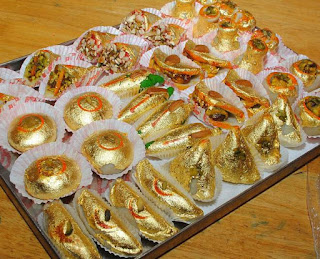Navratri Cloths

Choli[edit]
A choli (Hindi: चोली, Nepali: चोलो), (ravike in South India Telugu: రవికె, Kannada: ರವಿಕೆ) is a midriff-baring blouse commonly worn with the Indian saricostume (worn in India, Pakistan, Sri Lanka, Bangladesh, Nepal and other surrounding countries). It evolved from the ancient Stanapatta (also known as Kanchuki) and is cut to fit tightly to the body with its short sleeves and low neck. The choli is usually cropped, allowing exposure of the navel; the cropped design is particularly well-suited for wear in the hot summers of the Indian subcontinent.
Gagra[edit]
Lehenga, gagra/ghagra (Hindi: घाघरा ghāghrā) also chaniya[6] (known as pavadai in Tamil: பாவாடை) is a form of skirt which is long, embroidered and pleated. It is secured at the waist or hips and leaves the lower back and midriff bare.[7] The ancient version of skirt or ghagri evolved from bhairnivasani, which in turn evolved from the antriya when stitching on one side became tabular and was worn gathered together at the waist, and held by a girdle. This was one of the earliest forms of a clumsily stitched skirt. It was worn using a nada or drawstring. The ghagri was a narrow skirt 6 feet (1.8 m) long—the same length as the original antriya—and can still be seen worn by Jain nuns in India.
Until the early 20th century, women irrespective of class largely wore gagras which reached down to ankles, especially in the Hindi belt. This was largely due to jeweled toes indicating the marital status of women, as both married and unmarried women observed the ghoonghat veil. Gagras were made out of two to three layers of coarse khadi fabric which created large flared look and remained largely plain but were decorated with gota and badla embroidery on special occasions. Most commonly used dyes were indigo, lac and turmeric. This style can still be seen in rural areas of Haryana, Uttar Pradesh & Madhya Pradesh particularly during folk festivals.
The ancient, unstitched form of gagra has survived in folk theater costumes across India, particularly in Kathakali of Kerala, where layers of pleated khadi fabric are laid over a nada and tied around the waist, creating layers of flared skirt. This reflects the simplistic early style of unstitched gagr



Comments
Post a Comment